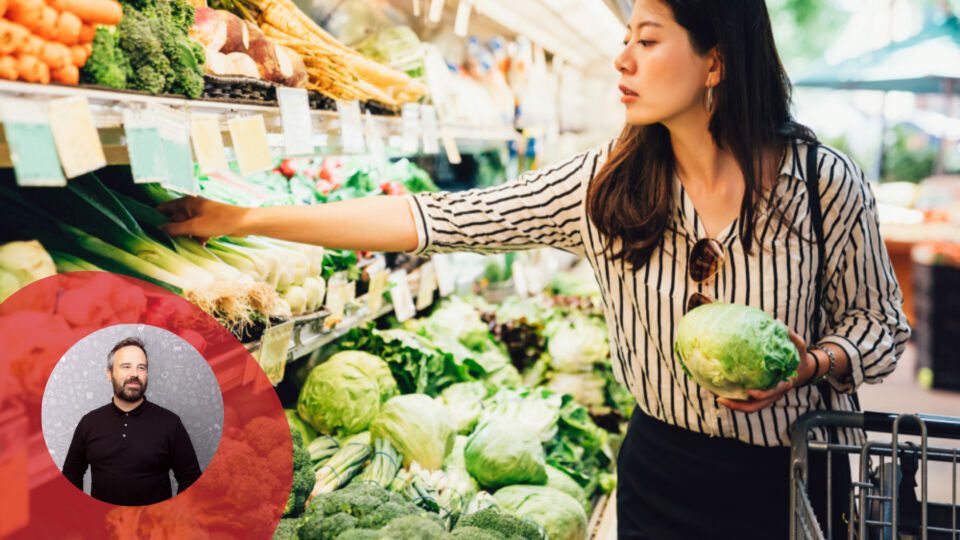Food retail demand has become fractured across multiple channels, with traditional brick-and-mortar formats losing out to the online medium. In 2019, online grocery accounted for 6.3% of total US grocery sales. Then in 2021, grocery ecommerce sales reached 9.5% and are predicted to increase to 11.1% and then 20.5% in 2022 and 2026 respectively. The sign is clear — ecommerce is here to stay.
The impact of this increasing growth is the resulting strain on incumbent infrastructure that was originally designed to manage only about 5% of a retailer’s total sales capacity; the steady rise in costs from stretching this capacity have shown home delivery, buy online, pick up in-store (BOPIS) and curbside fulfilment to be highly unprofitable. Research by Bain & Co. shows that manually picking online orders from a store and delivering it for free has a typical operating margin of -15%. BOPIS store orders are less costly but still come in at -5%.
Alongside the infrastructure dilemma, when speaking to grocers about their online operation, it becomes clear just how challenging optimizing and unlocking value during the ecommerce end-to-end process can be. Whether that be through the cost of poor substitution choices, online ranging availability limitations or general omnichannel performance diagnostics, retailers all face similar issues, all of which Retail Insight has been working to solve with our retail customers through the use of data.
Increasing demand is compounded by the continuing wage rises. As labor scarcity increases, retailers are finding themselves in a battle for talent, leading to broader benefits packages and rising wages being offered. The U.S. Bureau of Labor Statistics states that the average hourly earnings of all employees in the U.S. working for private companies rose to $30.85 in September 2020 after significant rises across the year. This means a store picking model that is already unprofitable is leaking further margin.
External pressure is intensifying as innovation comes to the market from emerging competitors that are challenging cost bases further, meaning traditional retailers are needing to absorb even more cost to keep pace. Consider Amazon’s recent investment in ultrafast delivery player, Deliveroo — similar to the likes of Getir and DoorDash. While there is a range of opinions as to Amazon’s motivation, it is clear that the ecommerce giant will aggressively pursue its goal of acquiring new customers and gaining access to them through new channels. This investment also complements their commitments to rapid delivery.
For grocers’ customer base, the increasing appeal is to adopt a more omnichannel approach to consumption — a sign of the epidemic of increasing customer disloyalty. According to FMI in its U.S. Grocery Shopper Trends 2020 report, grocery shoppers now visit 5.1 grocery stores per month, up from 4.4 in 2019, while millennials and Gen Z visit six on average monthly.
Altogether, these may seem like the doomsday scenario for the retailer in the bricks vs. clicks battle, but in fact they are an opportunity for grocers to focus on in-store picking efficiency and profitability. This can seem like a very large mountain to climb because of the many moving parts in an ecommerce picking operation, but as mentioned previously, there are some standout pain points that can be addressed, and quickly.
For instance, at Retail Insight we have worked with several U.S. grocers on the challenge of Nilpicks — this being the time involved in a store associate looking for an item that is not available for picking. Further time is then lost as the store associate looks for a substitution. The issue is compounded by the suboptimal nature of many of these substitutions, as customers are typically unhappy receiving anything less than what they ordered. In this case, a simple integration of known out-of-stocks to the picking process would direct shoppers to a clearer and less disrupted shop. Through such a measure, one retailer saved $24 million a year in labor costs.
For retailers that want to prove the business case to scale, it makes sense to analyse the results across a number of stores to assess the size of the prize. As part of the pilot, it is also recommended to extend the algorithm to include more store signals, levers and drivers to generate a larger set of clusters for tuning at a lower granularity. And finally, review the clusters to see if they trigger upstream actions in the supply chain, such as replenishment, or direct customers to the substitute at the point of order by removing likely Nilpicks from the website.
This is just one example of how the concept of looking for connections between data points to solve everyday challenges can produce dramatic results, but this is only the start. Going through this review process should be the template for uncovering further ways to improve the operational efficiency of in-store picking.
Paul Boyle, a Master’s graduate in Engineering, became CEO of Retail Insight in 2011, having previously served as COO since the business was founded in 2005. He enjoys everything about Retail Insight; our people, products, and partners. Prior to Retail Insight, Boyle worked at P&G and HJ Heinz in Commercial and Strategy.




